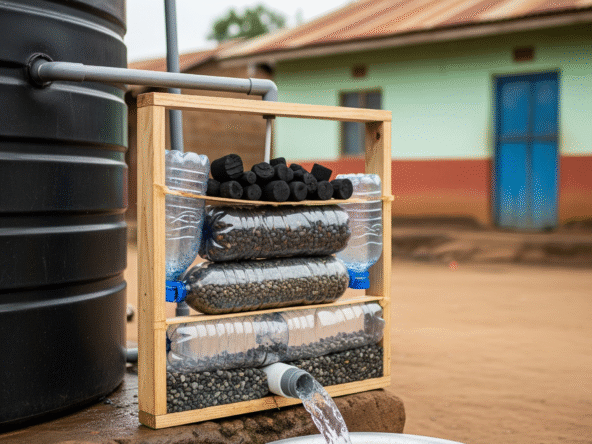Many properties across Kenya particularly in the hilly zones of Limuru, Kangema, Kerugoya, and parts of Kiambu sit on uneven or sloped terrain. This presents a unique challenge for water storage. However, with smart design and proper tank placement, a sloped plot can actually improve water pressure, save space, and reduce pumping needs.
This article outlines the practical methods for installing water tanks on uneven ground, the best tank types to use, and tips to safely secure them while maximizing gravity-fed flow.
1. Why Slope Matters in Tank Placement
Slopes can either be a design challenge or an advantage depending on how your system is set up.
Benefits of Sloped Plots:
- Natural gravity flow improves pressure for taps, irrigation, and toilets
- Elevated placement without building costly steel towers
- Easy runoff direction for rainwater collection
Challenges:
- Soil erosion around the tank base
- Uneven stress distribution that may cause tank tilting
- More technical excavation and anchoring required
To avoid foundational mistakes, read Building on Sloped Plots in Kenya.
2. Choosing the Right Tank for a Sloped Plot
| Tank Type | Best Use on Slopes | Pros |
|---|---|---|
| Plastic tanks | Mid to top of slope | Lightweight, easy to anchor |
| Concrete tanks | Buried at mid or downhill areas | Durable and pressure-resistant |
| Steel tanks | Elevated at slope tops | Great for high-pressure gravity-fed systems |
| IBC tanks | Terraced, small-space placement | Compact, affordable, great for small homes |
Need space-saving options? Check out IBC Tank Use in Kenyan Homes.
3. Best Tank Placement Strategies for Different Slopes
a) Bottom-of-Slope Placement:
- Ideal when using a pump-fed system
- Tank can collect rainwater or supply water for elevated pumping
- Use retaining walls and trenches to guard against erosion
b) Mid-Slope Placement:
- Best for direct gravity pressure to homes or gardens
- Install a leveled concrete base
- Integrate multi-tank linking systems for redundancy and distribution
c) Top-of-Slope Placement:
- Provides maximum gravity-fed pressure
- Excellent for irrigation, rooftop tanks, or high-demand homes
- Must be securely anchored to prevent slippage or wind damage
Learn how gravity-fed systems work in Gravity-Fed Tank Setups in Kenya.
4. Foundation and Structural Support
Regardless of slope type, your tank must rest on a stable, level platform.
Tips for a Safe Tank Base:
- Dig into the slope and build a concrete slab with compacted hardcore
- Use masonry or steel frames for elevated tanks—ensure wide base-to-height ratio
- For windy areas, reinforce stands with bracing or guy wires
- Install retaining walls or gabions where erosion risk is high
Elevated setups need sturdy bases—see DIY Tank Stand Construction in Kenya.
5. Integrating Rainwater Harvesting and Automation
Your sloped terrain gives you a natural advantage when collecting and distributing water:
- Use sloped gutters to direct rainwater into tanks
- Install first-flush filters to remove debris
- For consistent pressure and overflow control, automate with float switches
- Link tanks across levels using multi-tank systems
For full setup integration, see Rainwater Harvesting in Kenya.
6. Maintenance and Safety Reminders
- Clean tanks at least twice a year to prevent algae buildup and odor
→ How to Clean Water Tanks - Protect inlets with leaf guards or mesh screens
- Install overflow pipes to soak pits or gardens to prevent erosion
→ Soak Pit Design Guide - Use black or UV-treated tanks to prevent light-induced contamination
→ Top Water Tank Brands in Kenya
Final Thoughts
Tank installation on a sloped plot isn’t just possible it can be highly efficient and cost-saving. Whether you’re working with a narrow hillside property or a stepped landscape, smart placement, secure anchoring, and integrated systems will ensure consistent and safe water supply for years.
Don’t forget: the slope gives you free pressure, better runoff control, and opportunities to make rainwater harvesting even more effective.
Related Guides to Explore:


